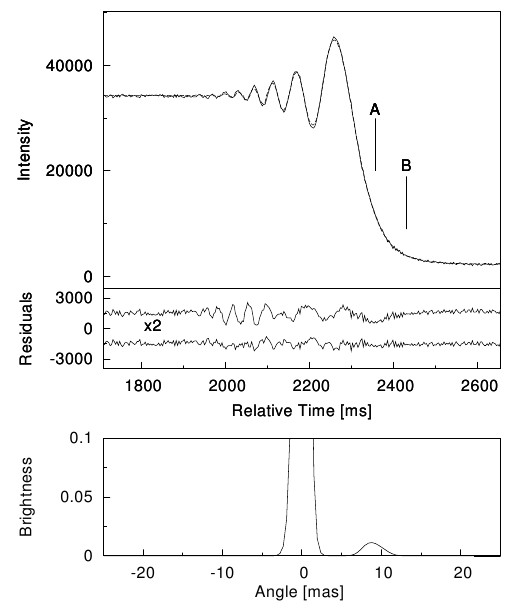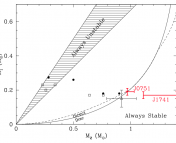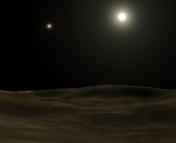
The Undergraduate Research series is where we feature the research that you’re doing. If you are an undergraduate that took part in an REU or similar astro research project and would like to share this on Astrobites, please check out our submission page for more details. We would also love to hear about your more general research experience!
Saurav Ruparelia
Warwick University
Hi, my name is Saurav. I am an undergraduate studying Physics with Astrophysics at the University of Warwick. I completed this research through URSS (Undergraduate Research Support Scheme) under the supervision of Dr. Ingrid Pelisoli. I presented my results at a showcase on the 15th of November at my university.
Stars that shouldn’t exist
White dwarfs of mass less than 0.5 solar masses shouldn’t exist. Low-mass stars are expected to take a long time to evolve into white dwarfs – sometimes even trillions of years. The age of the Universe is estimated to be 13.7 billion years old and so, the progenitors of <0.5 solar mass white dwarfs have not had time to evolve. Yet, we observe many white dwarfs in this range – these are called Extremely Low-Mass white dwarfs (ELMs). The most likely explanation for these exceptions to the rules is that binary systems can accelerate stellar evolution, allowing ELM stars to reach their white dwarf stage more quickly than they otherwise would.
If this is the case, then we would expect to see a smaller star (a companion) orbiting a larger star in a binary system. A companion can be detected by analysing the light produced from the system, since the stars are in orbit around each other. There are sky surveys that make their data from stars available, such as the Transiting Exoplanet Survey Satellite (TESS); these surveys have tracked the light over time and produced light curves for thousands of white dwarfs. A massive star should deform an ELM, so the white dwarf will shine a variable quality of light toward our telescopes as the system rotates.
How can we identify potential binary systems?
In this work, I downloaded and analysed the raw data from 429 stars for many systems. Using Python scripts, I extracted raw data from 10 surveys and produced light curves for each star. If a light curve shows regular fluctuation – like a sine wave as seen in Figure 1 – we can estimate the period of the binary orbit it might be on. The periods of binary systems should be between 20 minutes and 12 hours. (If the calculated period falls outside this range, it suggests either a problem with the data or that the satellite has rotated fully rather than the stars orbiting.)
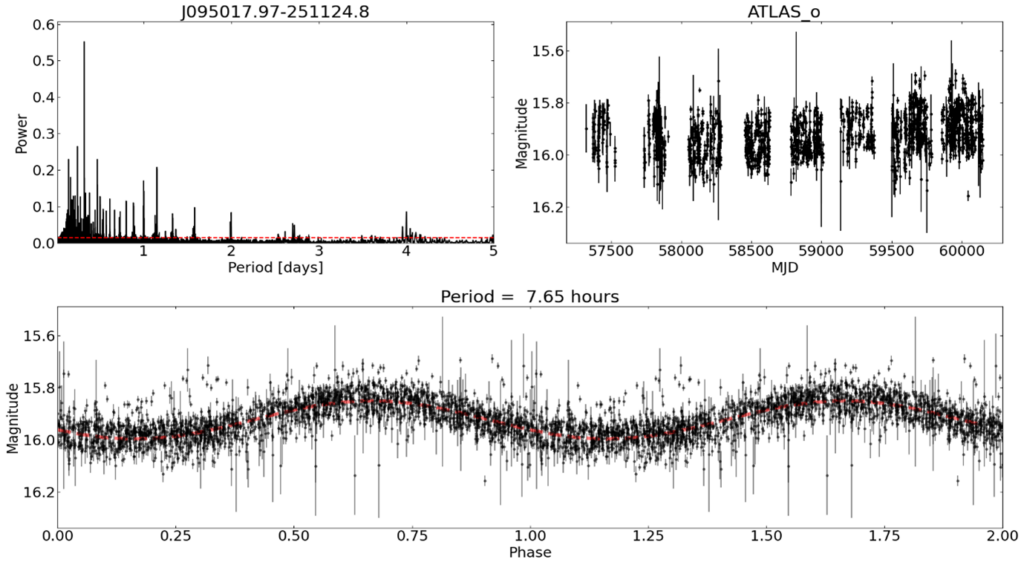
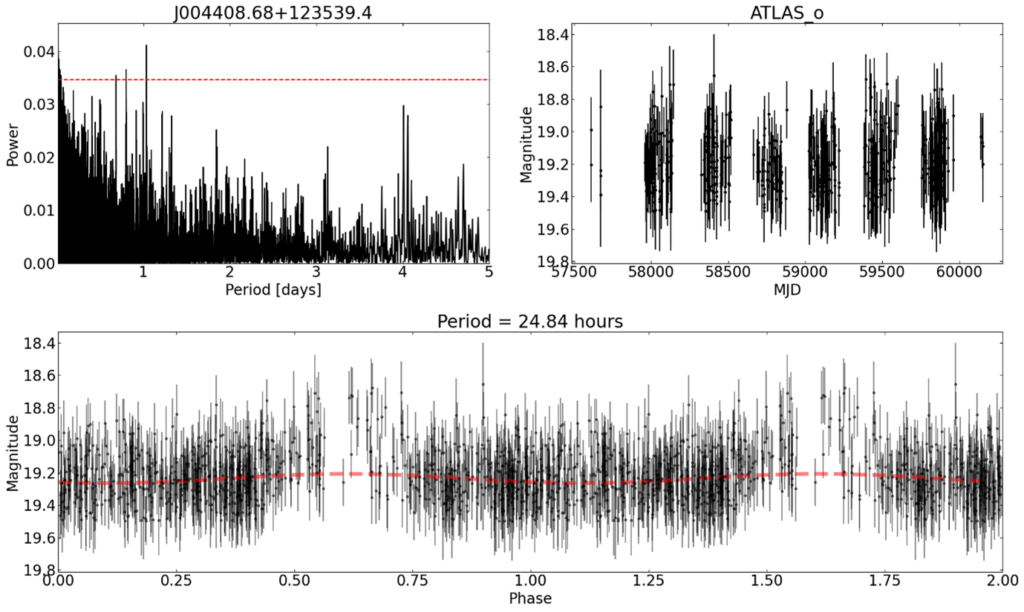
What was found?
Out of the 429 stars in my database, 18 had light curves that suggested they might be ELMs in binaries – that is, their data from at least one or more of the surveys suggested a period between 20 minutes and 12 hours. By inputting the coordinates of these candidate ELMs into Simbad (a website that uses Gaia Data to produce pictures of the stars), the stars could be identified. For example, one of the most promising stars is J230323.54-261459 (the numbers before the +/- symbol show the right ascension and the numbers after show the declination):

I discuss the 18 potential binary systems in more depth here.
What is the significance of this work?
White Dwarfs in binaries are very important since they are sources of gravitational waves. Gravitational waves can help us produce a three-dimensional map of the distribution of White Dwarf binaries in our galaxy and possibly, the distribution of stars in our galaxy in general. Additionally, the findings of potentially new binaries enable us to hold a greater understanding to the evolution of such systems. This project mainly focused on periodic variability in the white dwarfs, so more research on aperiodic variability could be completed.
Conclusion
This project aimed to produce and analyse the light curves of 429 stars to identify binary systems which could contain Extremely Low Mass White Dwarfs. Following the analysis of light curves, 18 stars were found to be potential binaries. Further research into this area can be completed by full analysis of aperiodic variability in the systems and disregarding those that produce such variability.
Astrobite edited by Mark Dodici


